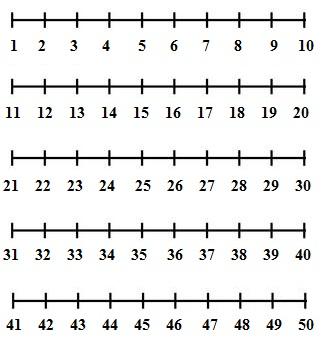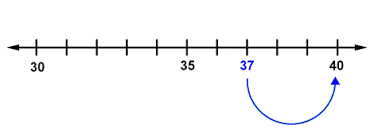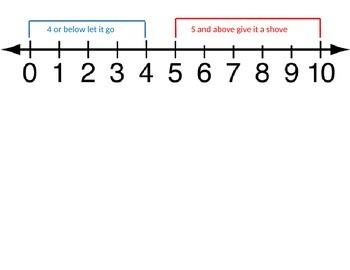In order to teach students how to round, teachers use all sorts of tricks. Such tricks include rollercoasters, underlining digits, step-by-step anchor chart instructions, chants, and more. However, teaching rounding using tricks is a short-term solution.
Your students are showing you that they have some gaps in their place value understanding if you are having to use tricks in order for students to understand rounding.
Rounding basically boils down to which number is nearest. If your 3rd-grade or 4th-grade student doesn’t know that 239 is closer to 200 than it is to 300, then teaching a unique trick rather than addressing their place value gap is hurting them eventually.
Use our rounding calculator for free

Teach Rounding Using Open Number Lines
A much better long-term plan than using catch tricks is teaching students to round using open number lines. This will help strengthen their place value understanding together with helping them with their rounding skills. As they progress to more difficult math they will be able to use what they have learned about creating open number lines.
An open number line is just a number line that begins empty. Based on the problem students are trying to solve, they fill in the number line and build on it.
Students will easily be able to see visually what number is closest if they have the ability to draw out an appropriate open number line when rounding to the nearest 10, nearest 100, or nearest 1,000. Rounding will be effortless!
Introduce Rounding Using Scaffolded Number Lines
asking your students to start using and creating open number lines without any scaffolding will be frustrating if they are struggling with place value skills. Scaffold this skill by providing partly filled-in number lines that concentrate on specific place value skills students have a difficult time with.
Determining the midpoint between two multiples, and determining what two multiples (of ten, hundred, thousand, etc.) a number is in between are the place value skills that most students struggle with related to rounding.
Although it may take a little longer than teaching students a quick trick, however, the place value skills it strengthens are priceless, particularly as students tackle more complex math.

Determining the Midpoint Between Two Multiples
Let your students practice labeling halfway points or midpoints on number lines where the multiple of ten, hundred, thousand, etc. is already provided for them. Begin with numbers less than 100, then slowly get to larger numbers.
Identifying What Multiples [of Ten, Hundred, etc.] A Number is In Between
After providing the midpoint and another number for context, let students label the multiples that a number falls between. Similarly to the above, begin this activity with numbers less than 100 and then slowly rise to larger numbers. This will let you determine where exactly your students have difficulties.
When your students are capable to do these two rounding activities perfectly, then they likely have the place value foundation to be successful in rounding to the nearest 10, 100, and 1,000 using open number lines.
With some small guidance, your students will be able to draw their own number lines when rounding. They will also need some guidance on how to round the midpoint since it is equally close to both sides.
How to Help Students Who Lack Rounding Skills
Students of 2nd, 3rd, or 4th grade will need practice with different place value skills, depending on where they struggle if they are not able to do these two activities.
Have your students practice filling in missing pieces on all sorts of number lines, sometimes, students just need a little more scaffolding and practice before moving on. This will help them build a foundation for all kinds of skills, not just rounding.
We have found that the majority of students that were struggling were actually capable of doing these activities using smaller numbers, than larger numbers. This indicated that students had a solid foundation for numbers less than 1,000, but required practice with numbers greater than 1,000.
Round to the nearest hundredth

Do the same things you would do to practice smaller numbers, in order to build place value understanding for numbers greater than 1,000. Practicing counting by different multiples is an uncomplicated, impromptu activity that can be done anytime you have an additional couple of minutes or you are waiting in the hallway. For instance:
- count by 1s starting at 3,589
- count by 10s starting at 2,000
- count by hundreds starting at 60,200
- count by thousands starting at 77,400
You need to do exercises like this both orally and written. It will be surprising how students struggle with counting numbers larger than 1,000 (even counting by 1s) when they have to write it out.
To count for a quick, no-prep activity, have students use a blank number grid or personal whiteboards and dry-erase markers.